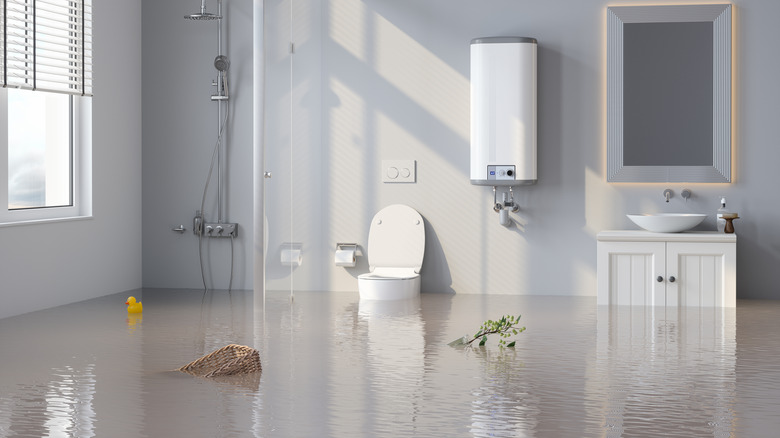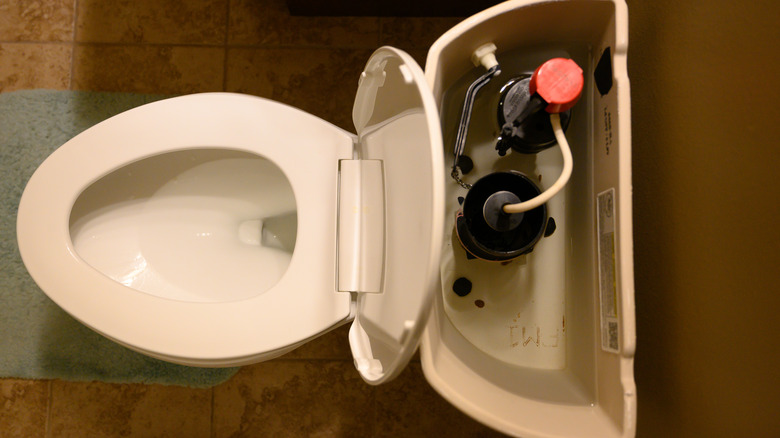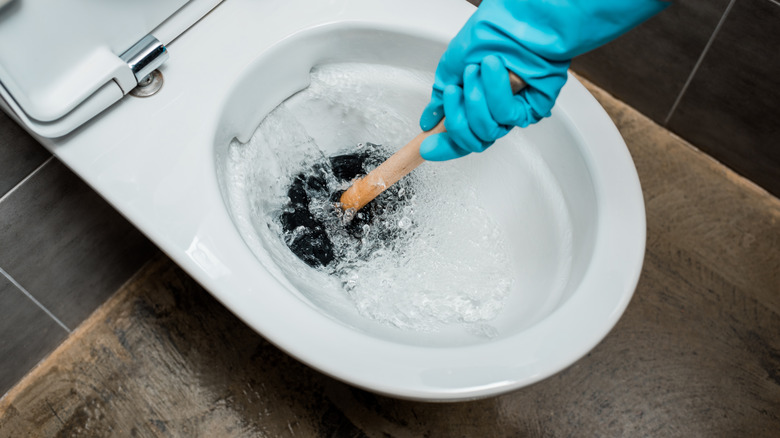Here's What's Causing Your Toilet To Overflow
When a toilet overflows, it may be a frustrating and filthy experience, leaving you scrambling for solutions and ways to avoid it in the future. Water and debris from the toilet bowl can run over onto the bathroom floor, creating an unsightly and unclean situation that should be dealt with immediately to avoid numerous issues, such as mold growth and the spread of bacteria and parasites that may lead to a few potential health issues. The overflow might also cause water damage to your bathroom's walls, flooring, and any nearby furniture and fixtures.
The restoration process can become more complex if additional damage is caused by water seeping into the subfloor and nearby rooms. But what specifically is generating this terrifying circumstance? Clogs in the drain pipes, problems with the float mechanism, and issues with the sewage line are common causes. By understanding these possible issues, you can take the necessary steps to address them and restore your bathroom to normalcy.
Common causes of toilet overflow
The first likely cause of a toilet overflow is a clog in the drain line. Your toilet's drain pipe transports water and waste away and into the sewer system. When this pipe is blocked, waste and water have nowhere to go and overflow into the bowl. Clogs can occur for a number of reasons, such as flushing paper towels, sanitary goods, or an excessive amount of toilet paper.
A broken float valve is another potential reason your toilet may overflow because it is a crucial component in controlling the tank's water level. The float rises with the water level when it operates properly, telling the fill valve to cease filling the tank when it reaches a set level. However, if the float gets damaged or isn't adjusted correctly, it could lead to the tank filling up too much and eventually overflowing. Finally, blocked plumbing vents can also cause a toilet overflow. By allowing air to enter the pipes, plumbing vents balance the system's pressure and guarantee a smooth flow of both water and waste. However, these vents can alter the air pressure when blocked and cause major damage to your pipe system.
What to do when your toilet overflows
To reduce damage and health risks, you must act fast when you discover your toilet is overflowing. Avoid flushing once more, then look for the shut-off valve, which is typically found on the wall behind the toilet. Next, turn it clockwise to shut off the water supply and stop any further overflow. To choose the best line of action, take some time to evaluate the issue and identify the source of your problem. If you're dealing with a clog, use a plunger to unclog the pipe by ensuring a tight seal over the toilet bowl's drain hole. Then press down firmly before lifting up just as forcefully. Continue doing this until the water begins to drain, but be aware that it can take several tries to get the clog out.
Cleaning up any water and debris on the floor is essential when the water has stopped overflowing. Put on gloves and use a mop or towels to soak up the water. To prevent contamination in other areas of your home, dispose of the towels in a plastic bag. After removing the water, sanitize the area completely to eliminate any pathogens and hazardous bacteria that the overflow might have introduced. Finally, check your bathroom for any indications of water damage, such as water stains or a musty smell, and immediately remedy any damage to stop subsequent problems.


